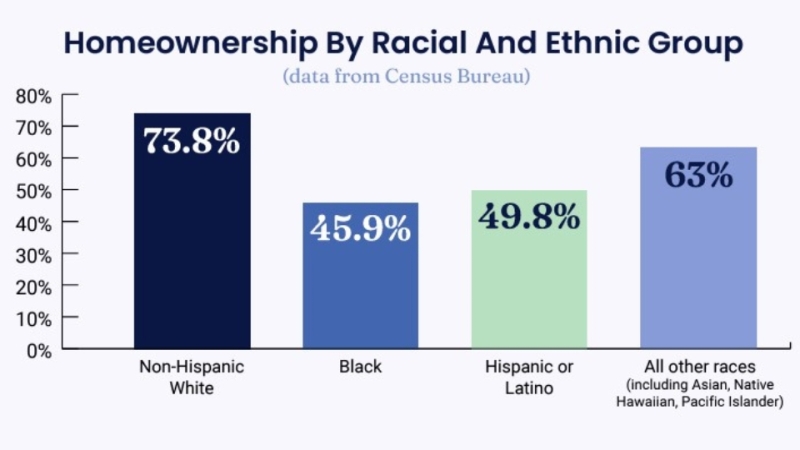Mortgage Economic Review For February 2023

A summary and review of key economic data that affects the mortgage and real estate business.
By Mark Paoletti
Mortgage Elements Inc.
The Mortgage Economic Review is a monthly summary of key economic indicators, data, and events pertinent to mortgage and real estate professionals.
At a Glance: Key Economic Events and Data released during January 2023
- Interest Rates: The 10-Year Treasury yield fell to 3.52% (Jan. 31) from 3.88% (Dec. 30).
- Housing: Existing home sales fell 1.5%, new home sales rose 2.3%, and pending home sales rose 2.5% during December. Home prices continue to fall, up about 7% in 2022.
- Labor: The U.S.economy created a whopping 771,000 new jobs in December & January. The unemployment rate declined to 3.4%, and wages increased 4.4% year over year (YoY).
- Inflation: December Consumer Price Index (CPI) fell 0.1% (+6.5% YoY), and Producer Price Index (PPI) fell 0.5% (+6.2% YoY).
- The Economy: U.S. gross domestic product (GDP) grew by a 2.9% annualized rate in the fourth quarter of 2022, up 1% YoY.
- Consumers: Retail sales fell 1.1%, consumer sentiment up, consumer confidence down.
- Stock markets were up in January: Dow +2.8%, S&P +6.2%, Nasdaq +10.7%.
- Oil prices fell to $79/barrel (Jan. 31) from $80/barrel (Dec. 30).
- Natural Gas prices fell to $2.75MMBtu (Jan. 31) from $4.48MMBtu (Dec. 30).
Interest Rates and Fed Watch
The first Federal Open Market Committee (FOMC) meeting of 2023 wrapped up with the committee raising the federal funds rate by 0.25%. This modest increase was welcome news for the stock, bond, and housing markets. Inflation is decelerating, but it's still a problem. The FOMC statement said: "The committee anticipates that ongoing increases in the target range will be appropriate in order to attain a stance of monetary policy that is sufficiently restrictive to return inflation to 2% over time." At the news conference after the FOMC meeting, Chairman Jerome Powell said: “We can now say for the first time that the disinflationary process has started. ... Very premature to declare victory or to think we really got this." FedSpeak Translation: The Fed will keep a restrictive monetary policy until inflation approaches the 2% range. Keep in mind when interest rates are raised, the effect on the economy and inflation has a lag. They will not stop raising rates until their 2% inflation target gets closer.
- 10-year Treasury note yield fell to 3.52% (Jan. 31) from 3.88% (Dec. 30).
- 30-year Treasury bond yield fell to 3.65% (Jan. 31) from 3.97% (Dec. 30).
- 30-year fixed mortgage fell to 6.13% (Jan. 26) from 6.42% (Dec. 29).
- 15-year fixed mortgage fell to 5.17% (Jan. 26) from 5.68% (Dec. 29).
Housing Market Data Released In January 2023
The 2022 calendar has ended, and the final statistics are rolling in. The data confirms what everyone already knows — it was a challenging year for housing. Existing home sales (which is 90% of all homes sold) down 34% YoY; new home sales down 27% YoY; building permits down 30% YoY; and housing starts down 22% YoY. There were 1.03 million new single-family homes completed in 2022. That's a welcome number of new homes to add to the housing stock. Housing completions should continue to rise through the first half of 2023, then begin to taper off. Lumber prices are back to pre-pandemic levels. That should help keep new home prices down.
- Existing home sales (closed deals in December) fell 1.5% to an annual rate of 4.02 million homes, down 34% in the last 12 months. The median price for all types of homes is $366,900, up 2.3% from a year ago. The median single-family home price is $372,700, up 2% YoY. The median condo price is $317,200, up 3.2% YoY. Homes were on the market for an average of 26 days, and 57% were on the market for less than a month. Currently, 970,000 homes are for sale. 28% were all-cash sales.
- New home sales (signed contracts in December) rose 2.3% to a seasonally adjusted annual rate of 616,000 homes, down 26.6% YoY. In all of 2022, 644,000 new homes were sold, down 16.4% from 771,000 in 2021. The median new home price is $442,100. The average price is $528,400. There are 461,000 new homes for sale, a 9-month supply.
- Pending Home Sales Index (signed contracts in December) rose 2.5% to 76.9 from 73.9 the previous month, down 33.8% YoY.
- Building permits (issued in December) fell 1.6% to a seasonally adjusted annual rate of 1.33 million, down 29.9% YoY. Single-family permits fell 6.5% to an annual pace of 730,000 homes, down 34.7% YoY.
- Housing starts (excavation began in December) fell 1.4% to an annual adjusted rate of 1.38 million, down 21.8% YoY. Single-family starts rose 11.3% to 909,000 units, down 25% YoY.
- Housing completions (completed in December) fell 8.4% to an annual adjusted rate of 1.41 million, up 6.4% YoY. Single-family completions fell 8% to an annual adjusted rate of 1.01 million homes, down 0.9% YoY.
- S&P/Case-Shiller 20-City Home Price Index fell 0.5% in November, up 8.6% YoY.
- FHFA Home Price Index fell 0.1% in November, now up 8.2% YoY.
Labor Market Economic Data Released In January 2023
The economy created a whopping 517,000 new jobs during January and 260,000 in December. In all of 2022, 4.5 million new jobs were created. Add the January 2023 data, and the economy created over 5 million new jobs in the last 13 months (385,000 per month). The unemployment rate declined to 3.4%, the lowest in five decades. The ratio of job openings to unemployed worker is 1.9, meaning there are 1.9 jobs available for every unemployed worker. The robust labor market is great news if you are looking for a job, but lousy news for inflation. Most labor analysts contend that inflation cannot be contained as long as the unemployment rate is under 4%. They predict the unemployment rate to creep past 5% by the second half of 2023 as higher interest rates percolate through the economy, but there has been no sign of that yet.
- The Economy created 517,000 new jobs in January and 260,000 in December.
- The unemployment rate fell to 3.4% in January from 3.5% in December.
- The Labor Force Participation Rate rose to 62.4 in January and 62.3% in December.
- The average hourly wage rose 0.3% in December and 0.3% in January, up 4.4% YoY.
- Job openings rose to 11.01 millon in December from 10.5 million in November.
Inflation Economic Data Released in January 2023
Inflation is slowly drifting lower. All the inflation indicators (CPI, PPI, & PCE) released in January show lower Inflation. With the December CPI data released in January, we get an accurate look at inflation for all of 2022. When you include all goods and services, the CPI was up 6.5%, and core CPI was up 5.7%. In all of 2022, energy prices were up 7.3%; gasoline down 1.5%; natural gas up 19.3%; fuel oil up a whopping 41.5%; electricity up 14.3%; shelter up 7.5%; food up 10.4%; clothes up 2.9%; medical care up 4.1%. The big loser: Used cars p[rices are down 8.8% while new cars are up 5.9%.
- CPI fell 0.1%, up 6.5% YoY | Core CPI rose 0.3%, up 5.7% YoY
- PPI fell 0.5%, up 6.2% YoY | Core PPI rose 0.2%, up 5.8% YoY
- PCE rose 0.1%, up 5% YoY | Core PCE rose 0.3%, up 4.4% YoY
GDP Economic Data Released in January 2023
The first estimate for fourth-quarter 2022 GDP showed the U.S. economy grew at a 2.9% annualized rate, up 2.1% YoY. Looking back at 2022: the first half experienced negative growth, while the second half posted an impressive rebound. The economy continues to demonstrate remarkable resilience despite the disruption caused by the war in Ukraine, supply-chain issues, a restrictive monetary policy, and COVID lockdowns in China. Regardless of this resilience, most economists still expect a recession in the last half of 2023, but so far the data has yet to indicate that. If a recession happens, everyone hopes the Fed can engineer a soft landing. So far, it looks good, but that can change quickly.
Consumer Economic Data Released in January 2023
Retail sales during December — the height of the 2022 holiday shopping — fell 1.1%. That number includes higher prices from inflation; if you adjust for inflation, real retail sales fell even more. That's a bad sign. Consumers are cutting back — shifting their spending to necessities and away from discretionary items. Since our economy is 70% consumer-driven, a drop in consumer spending will eventually translate into slow GDP growth. In the meantime, consumer sentiment rose while consumer confidence declined.
- Retail sales fell 1.1% during December, up 6% in the last 12 months.
- Consumer Confidence Index fell 1.7% to 107.1 from 109 the prior month.
- Consumer Sentiment Index (University of Michigan) rose 8.7% to 64.9 from 59.7 the previous month.
Energy, International, and Things You May Have Missed
- West Texas Intermediate Crude fell to $79/barrel (Jan. 31) from $80/barrel (Dec. 30).
- North Sea Brent Crude was unchanged at $84/barrel (Jan. 31) from Dec. 30.
- Natural gas fell to $2.75/MMBtu (Jan 31) from $4.48/MMBtu (Dec 30).
- Mass arrests in Brazil: Protesters occupied government buildings after President Lula da Silva was sworn in. They claim the elections were rigged.
- The tech sector laid off over 154,000 workers in 2022.
- Tech giants Microsoft, Google, and Amazon announced 40,000 layoffs in January.
- The U.S. and Germany agreed to send Abrams and Leopard tanks to Ukraine.
The Mortgage Economic Review is produced by Mortgage Elements Inc. and MortgageElements.com, and is a concise summary of key economic data that influences the mortgage and real estate industries. The information is gathered from sources believed to be credible; some are opinion-based and editorial in nature. Mortgage Elements Inc. does not guarantee or warrant its accuracy or completeness.





